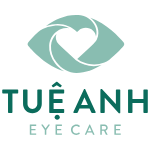MECHANISM AND ADVANTAGES OF ORTHO-K METHODS IN TREATMENT OF REFRACTIVE ERRORS
Ortho-K glasses are specifically designed to be worn at night - a lightweight form of the cornea that changes the shape of the cornea, without causing damage to the eyes, to treat refractive defects like near-sightedness , far, chaotic, presbyopia.
MECHANISM OF ORTHO - K
The normal eye is when a light ray is focused on the retina, creating a clear image. Refractive error is a term used to describe light converging outside the retina (before or after the retina), leading to blurred, unclear vision.

Ortho-K eyeglasses (Ortho K) is a non-surgical refractive error treatment that uses night-time contact lenses with special interchangeable structures and materials. Change the curvature of your cornea while you sleep at night to improve vision. Ortho K glasses only affect the cornea of the eye - the transparent part that covers the black of the eye. Ortho-K glasses will reduce the hydrostatic pressure in the tear layer between the contact lens and the cornea to gradually rectify the cells on the surface of the cornea (epithelium) leading to changes in surface curvature, thereby changing the focus of the eye.
Ortho K glasses are made of a special material with high air permeability, so it ensures a good supply of oxygen to the cornea while you sleep.
When the glasses are removed the next morning, the curvature of the corneal surface will be gradually changed to help improve your eyesight throughout the day. You will need to put on your glasses at night before going to bed again so that they can continue to work, and you will typically achieve up to 20/20 after removing your glasses about 1 day to a few weeks after using the ortho. K depends on the degree of refractive error.
BENEFITS WHEN MEASURING ORTHO-K
- Reduce the momentum of growth for children in the process of development. Extensive studies in the US have shown that wearing Ortho K glasses reduces children's myopia by 30% compared to wearing frames because the child's cornea is shaped during the wearing of glasses. "Framed" like the cornea at first when the glasses started.
- Very convenient to be able to comfortably participate in sports activities and daily activities with good eyesight without having to wear glasses. This will help children become more confident, physically and mentally active.

- A Great Alternative to Lasik Surgery: Not all patients are suitable for lasik surgery. Like any surgical intervention, there is no guarantee that you will have maximum vision after lasik or other surgical procedures. There are also some complications of surgery that you should be aware of before having surgery. The most common complications of nearsighted surgery are halos and flare when you see the light, especially when you go at night, dry eyes, and loss of sharpness. Many of you are too young myopia stable (usually under 18 years old) or too high will not have a laser surgery indication or if you try to have surgery then the chance of you coming back is quite high. The surgery will permanently remove your corneal endothelial cell layer and the cell layer will not grow again. Ortho K, by contrast, is a conservative, non-invasive treatment that reshapes corneal cells without affecting the endothelial cell layer and is completely reversible after stopping glasses. In fact, Ortho K glasses have been shown to be safe and are widely recommended for use in patients 7 years of age and older.

